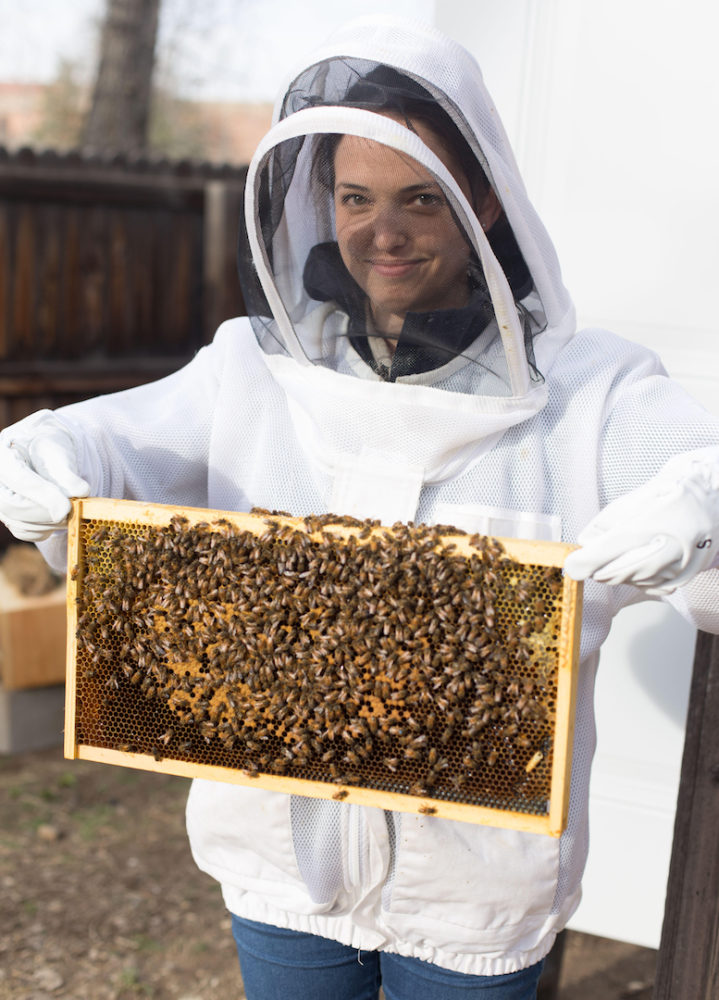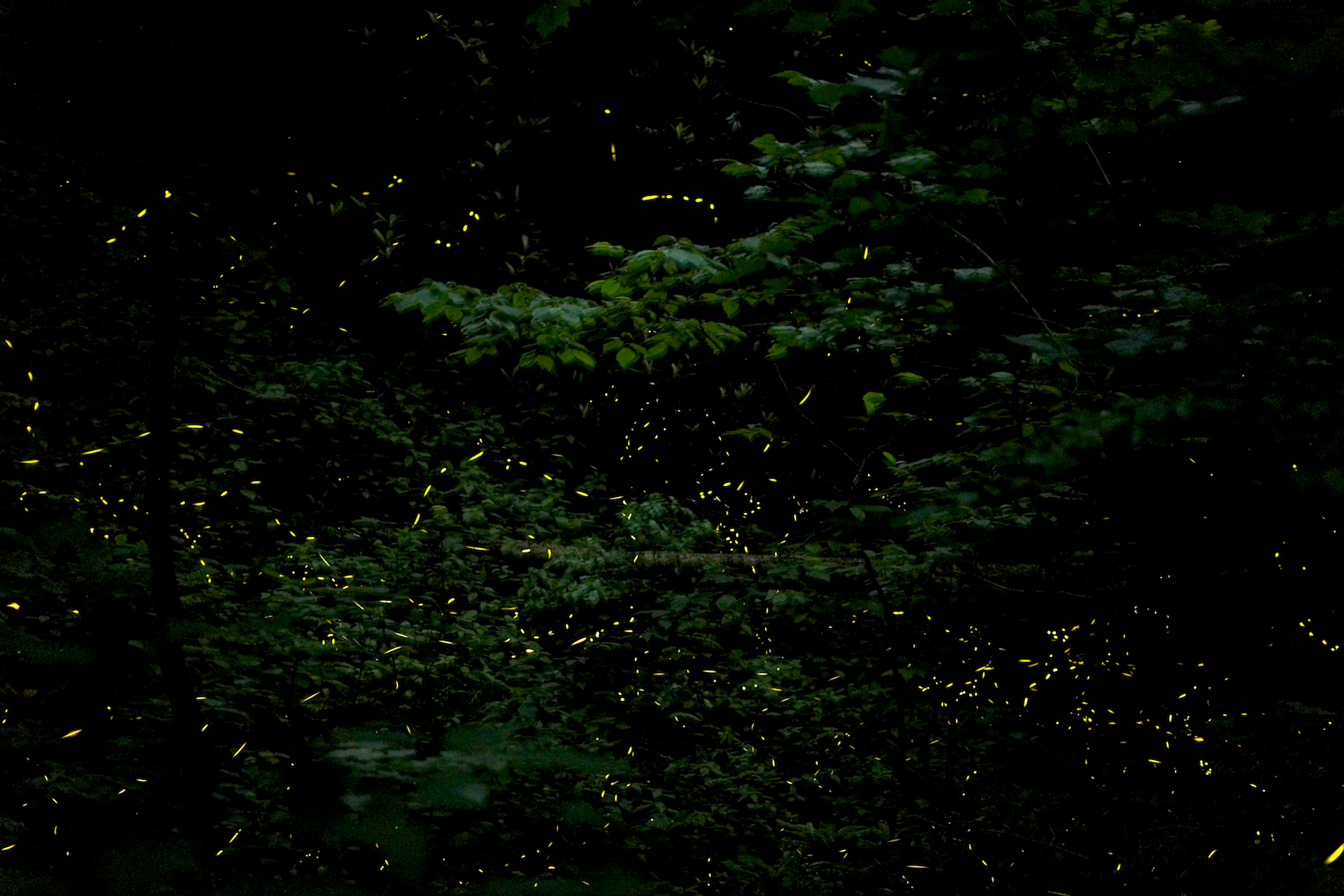
Computer scientist studies insect swarms to guide robot design
Computer scientist Orit Peleg studies honeybees and other swarming insects to understand how large groups of animals can work together as a unit. (Courtesy of Peleg Lab, University of Colorado Boulder)
A Q&A with an academic polyglot who draws ideas from nature documentaries.
Orit Peleg is no stereotypical computer scientist. She tends honeybee hives and travels in search of fireflies. Her computer models aim to capture the complexity of animals that behave collectively in groups, such as swarms of insects or herds of sheep. The insights gained from her research could help engineers design “swarms” of robots that coordinate their actions to carry out tasks such as search and rescue operations or large-scale construction jobs.
Peleg is an assistant professor at the University of Colorado Boulder. An academic polyglot, she speaks the languages of computer science, physics, chemistry, mathematics, and now, animal behavior. She presented research findings on Oct. 1 during the Council for the Advancement of Science Writing’s New Horizons in Science briefing at the ScienceWriters2021 conference.
In “Computing the Swarm: How the dynamics of fireflies, bees, and sheep may lead to robots that work en masse,” Peleg touched on the wide range of studies her research team conducted, from modeling firefly flashing to decoding honeybee communication.
We spoke with Peleg to learn more about her unique insect experiences and what inspires her research. This interview has been condensed and edited for clarity.
How does your background in physics, mathematics, and computer science help you understand animal behavior?
I think it basically serves as a lens or a set of tools or concepts. We’re looking at animal behavior and natural history through the lens of physics and computer science. I’m always trying to create analogies or translate behavior between what, for example, we know as a nonliving system in physics, how that would behave, and a living system that has similar properties.
How do you find new animals and behaviors to study?
My favorite approach is to watch a lot of nature documentaries. That’s also just fun as it is! Sometimes an interesting behavior is described that I start to feel relates to a known physical system or to a computational system that I would expect to behave in a certain way. And the animals do something surprising or exciting. That’s usually what draws my attention.
How do you use computer models when trying to understand collective animal behavior?
It usually doesn’t work on the first round of testing the model’s prediction, but it’s still very useful to play with a model to get an intuitive feel for the physical system. Then I try to see where the living system, the real system, the biological system, deviates from that physical system — this is where I think the magic happens. That’s where there’s something really exciting that the bees or the fireflies are doing that we didn’t consider with a nonliving physical system.
How did you go from solely computer-based research to experiments with insects?
The most exciting time in my career definitely was when we started working with experiments. It was so exciting that I actually continue to do this! First of all, just being able to validate the computational models with real experiments that we designed so we know that they can connect well to the models was amazing. It grounds the models. In fact, they’re no longer just models, they can be tested with the real biological system.

What were some of the challenges to studying how fireflies synchronize their flashing?
It was both amazing and beautiful and nerve-wracking at the same time. We had the intuition that with simple cameras, we could capture the flashes of the fireflies and then do 3D reconstruction, which is important for connecting the behavior of fireflies to the computational models. It’s always hard to do, because we have to be at the right place at the right time. It takes planning and predicting when the fireflies are going to be out and about as adults that flash. This only happens 10 days out of the year for one of these swarms.
What was it like when you finally saw a synchronized firefly swarm?
That was by far the most beautiful biological behavior I have ever seen! I’d read about the synchronization and I’d seen it in movies, but seeing it in person with my own eyes was just amazing! We never actually saw the end of one of these swarms. We were surrounded by little flashing lights that were synchronizing — it was really beautiful.
How can studying swarming insects help improve robotics?
In swarm robotics, the idea is to have many small, cheaply made, and hence dispensable, individual robots. Then you can manufacture lots of them, and they can perform some collective function. That’s the premise behind the swarms that we work with: Even if one firefly doesn’t flash properly, the effect it would have on the swarm would be minuscule.
What is it like doing research across disciplines?
I think a lot of people are intimidated by doing interdisciplinary work or moving into a new field because they feel like they need to be experts in that field already. Of course, there’s a sharp learning curve. But I want to say that it’s totally worth the effort. And if I can do it, then I think many other people can also do it.